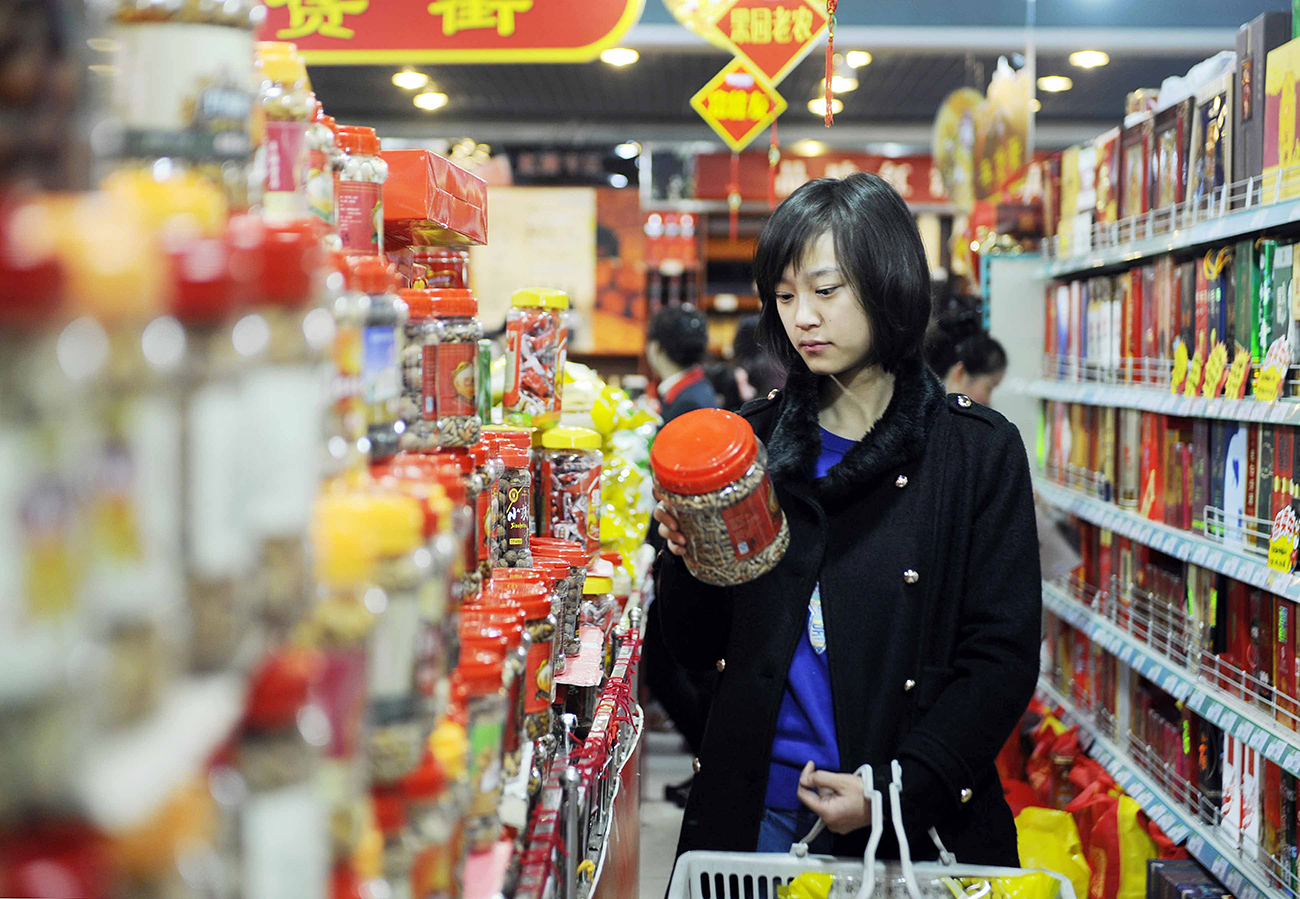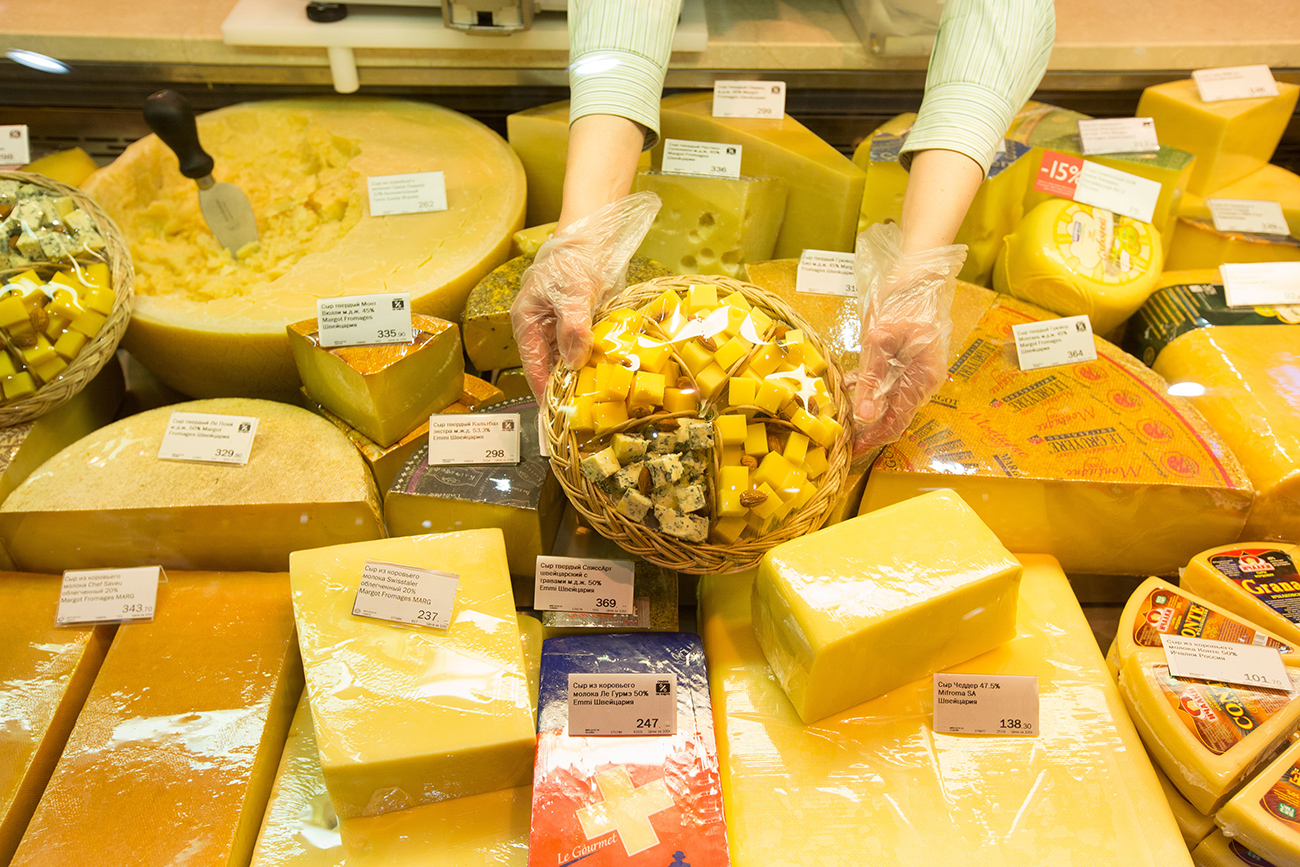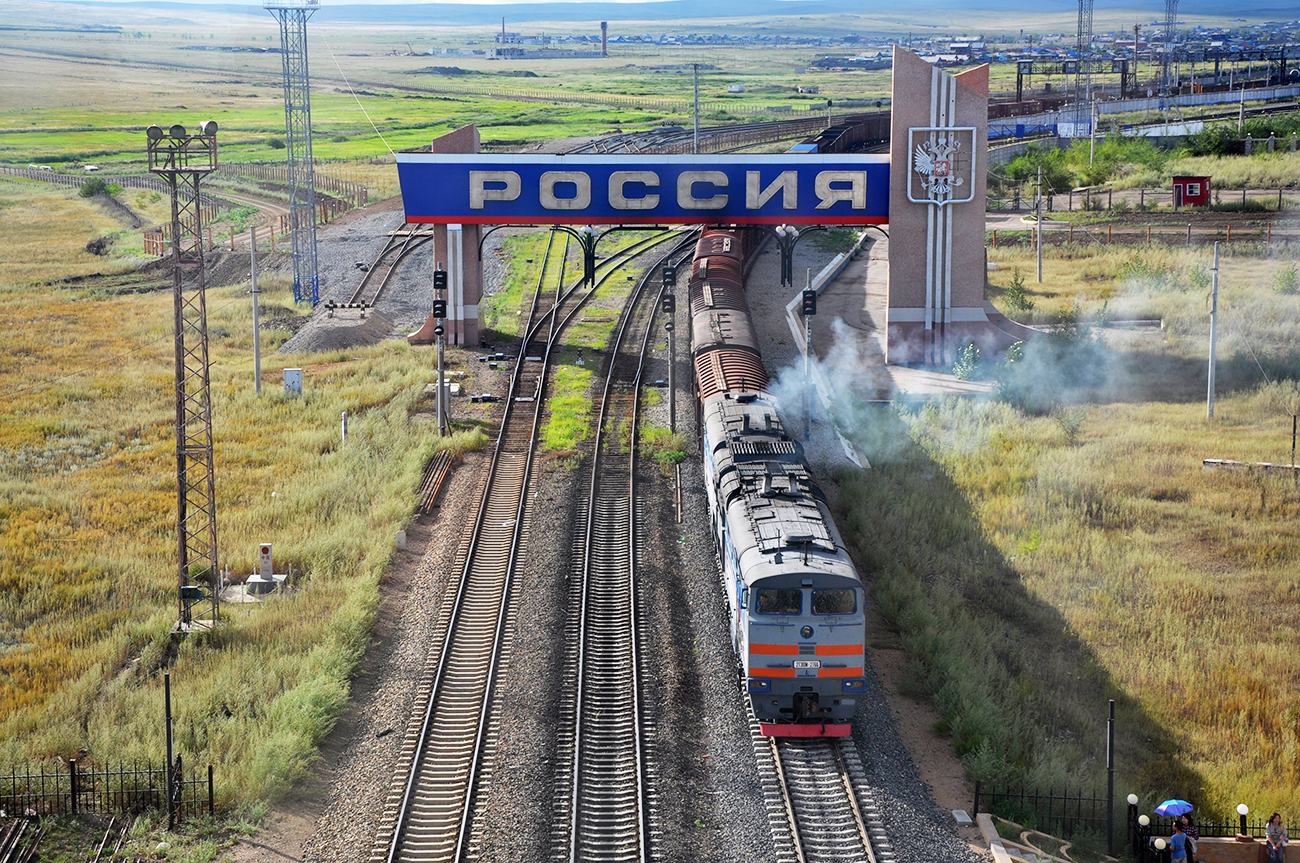How ‘Made in Russia’ eco-food can win Chinese consumers over

A customer chooses leisure food in a supermarket in Yinchuan, capital of northwest China's Ningxia Hui Autonomous Region.
ZUMA Press/Global Look PressDespite low export prices (and Xi Jinping’s craving for Russian ice cream), Russia's food producers face daunting challenges in entering a highly competitive market. Probably, the biggest problem at the moment is that Russian producers are simply unaware of the specifics of the Chinese market. If Russian exporters are thinking about making a long-term commitment to China, they should come up with a clear strategy and remain patient in their efforts to win over Chinese consumers.
‘Invading’ China’s food market
Russian food products were practically absent in the Chinese market for over 20 years. During this period, China became the largest food market in the world.
“We have just started to invade the Chinese market,” Alexander Tkachev, Russian Minister of Agriculture, said in a recent interview with state-run TV station Russia24.
 Russian chocolate is now being exported to Asia. Source: Elena Pochetova
Russian chocolate is now being exported to Asia. Source: Elena Pochetova
The “invasion” Tkachev referred to is a 1.5-million ton grain supply contract signed between China and Russia at the end of March 2017.
China accounts for 11 percent of Russian exports (this number has increased from 6 percent in 2013). China is the largest importer of Russian food, mostly in the form of raw food products: frozen seafood (about 60 percent of Chinese imports), soybeans, soy oil and sunflower oil.
At the moment, Russia's share of Chinese food imports is relatively small. While the U.S. sells $26 billion worth of food products to China every year, Russian exports to China accounted for just $1.13 billion during the first 9 months of 2016.
Rising purchasing power
The big question is whether Chinese customers will be interested in Russian food products besides raw fish and unprocessed grain. Most observers in Russia are putting high hopes on the growing purchasing power of the Chinese.
“The Chinese are becoming richer and are expanding their demand for basic products. Russian mineral water, wheat, meat (especially pork), fish, and dairy products have good prospects on the Chinese market,” says Oleg Remyga, head of the China Studies Lab at the Skolkovo Moscow School of Management.
 Russia's main food exports are grain and vegetable oil, and the domestic market is already saturated with poultry, pork and sugar. Photo: Chicken farm in Kabardino-Balkaria, Russia. Source: TASS
Russia's main food exports are grain and vegetable oil, and the domestic market is already saturated with poultry, pork and sugar. Photo: Chicken farm in Kabardino-Balkaria, Russia. Source: TASS
General statistics back up the expectations of Russian firms and prove that the Chinese have started to consume more, in conjunction with the country’s economy growth.
China has almost doubled its GDP per capita since 2007 and the Chinese average annual salary has grown dramatically over the last 6-7 years.
Consumer spending in China has shown a 150 percent increase since 2007 and this type of growth is expected to continue.
According to McKinsey’s recent research findings, the Chinese have become more sophisticated and selective in all aspects of consumption. In addition to this, they are also becoming more concerned about food safety and nutrition quality.
“Upper class Chinese consumers are also becoming interested in 'green' products and higher-quality goods,”Remgya added. “They see Russia's Siberia region as a clean and eco-friendly producer of such goods. In addition to this, sweets such ice-cream from Russia are set to become even more popular in China.”
At the moment, Russian food companies bank on low-priced and high-quality products in their quest for carving out a niche in the Chinese market.
“Russian products are 10-30 percent cheaper than their European or American counterparts. On the other hand, Russian sweets and cookies boast the same quality and perform even better according to their price-to-quality ratio,” a source from the Russian export industry, who is not authorized to speak to the media, said.
Using this competitive advantage, the largest and oldest confectionery holdings of Russia, have already been trying to win over Chinese consumers for several years with brands ‘Alyonka’ and ‘Korovka’.
President Xi Jinping has also paid lip service to the Russian sweets industry by telling Vladimir Putin that he likes Russian ice cream.
Low prices are not enough
However, even Alexey Gruzdev, Russia’s trade representative in China slightly deters the hopes of Russian exporters. He said in a recent interview that Russian exporters should build up a long-term strategy to become more recognizable in the Chinese market, because, low prices are insufficient to secure a future for Russia's food industry in China, and there is a need for a strategic business development.
Artem Zhdanov, a co-owner and marketing director of the UChina consulting company, is also quite skeptical about the existing appeal of Russian products to Chinese consumers.
“Russian products are familiar primarily in Xinjiang and in the northern provinces of China,” Zhdanov said. “In the rest of the country, the visibility of Russian products is virtually zero. I would say that Russian products are losing out to those of the U.S, Australia and New Zealand. To change this situation, years of methodical effort are required.”
Adjusting to China’s tastes
China's Heilongjiang Province is now the biggest consumer of Russian food products in the country. Russia accounts for about 16.6 percent of all foreign trade of the province that is located right on the Sino-Russian border.
Local media there is actually beginning to highlight the advantages of “eco-friendly food” from Russia and to discuss the prospects of trade growth between two countries. But the province itself ranks only 21stin the list of Chinese provinces according to GRP and is not the biggest market there.
Apparently, there is no chance for Russian producers to extend their reach beyond the Heilongjiang Province without adapting their products to Chinese tastes. “Most Chinese don't like sweet or fat products, so there needs to be less sugar and oil in these goods,” a source from the Russian export industry said.
Big marketing campaigns are also required to win over Chinese consumers, according to Artem Zhdanov. “Only a few Russian companies could afford large advertising campaigns, even in a single province,” he said.
Eco-friendly products from Russia
Despite the weak representation of Russian food products in the Chinese market, Ivan Zuenko, a research fellow at Center for Asia Pacific Studies of Russian Academy of Sciences’ Far Eastern Branch, believes that there are few steps that Russian authorities could take in order to help improve the situation.
“The most important thing that only the authorities are capable of doing is the creation and development of a ‘Made in Russia’ brand which focuses on the ecological advantages of Russian products. Without the government's involvement, even our largest exporters will be unable to develop this brand,” Zuenko said.
Artem Zhdanov thinks that the branding process could be initiated by the involvement of the Russian Export Center (REC), a development institution created in 2015 with the support of Russian government and Vnesheconombank (VEB).
The REC already makes an effort to help Russian exporters enter the Chinese market by organizing their participation in various trade exhibitions.
“The right thing to do is to create some kind of association of exporters aimed at the Chinese market with the support of the REC and the government. Such an association could start working on brand development in the China’s market, for example,” Zhdanov said.
Russia-China trade background
Despite the close political ties between Moscow and Beijing, bilateral trade has been consistently declining during the past few years. 2016 trade turnover finally showed a 2.2 percent increase and reached $69.5 billion. However, trade turnover between the two countries is comparatively small, and it remains very disproportional.
China is the leading exporter to Russia, while Moscow is 16th in the list of China's major trade partners. Russian exports to China are dominated by hydrocarbons, with oil and gas amounting to more than 60 percent of these exports.
If using any of Russia Beyond's content, partly or in full, always provide an active hyperlink to the original material.
Subscribe
to our newsletter!
Get the week's best stories straight to your inbox

